Rife machine therapy is an alternative treatment developed by Dr. Royal Raymond Rife in the 1930s. He believed that certain frequencies could target and eliminate pathogens like bacteria, viruses, and even cancer cells.

The machine purportedly generates frequencies that match those of the targeted organisms, thereby disrupting and "destroying" them without harming the surrounding tissue. However, the scientific and medical communities largely reject Rife therapy due to the lack of solid, peer-reviewed evidence supporting its efficacy. The original Rife machine uses plasma as a medium for radiation at certain frequencies. Today on the Internet you can find several types of Rife machines in which the given set of frequencies is transmitted to the human body through metal electrodes that should be held in the palms during the treatment. Unfortunately, they are sold at extremely high prices even though their effectiveness has not been proven at all.
For these reasons, in one of the previous videos , I described a simple and inexpensive way to make such a device if you have basic knowledge of electronics and microcontrollers. Due to the software requirements I used an Arduino mega microcontroller which is harder to get and relatively expensive.
At the request of several of my followers, I reworked the same device, but this time to work with the cheap and widespread ESP32 microcontroller, and even now new functions can be added, but I will consider that option in the future.The code is made a little differently because the ESP32 platform doesn't support the "Tone" library, but in the end the device works great and I think it's worth all the effort.
Like the previous time, the device is simple to make and consists of several components:
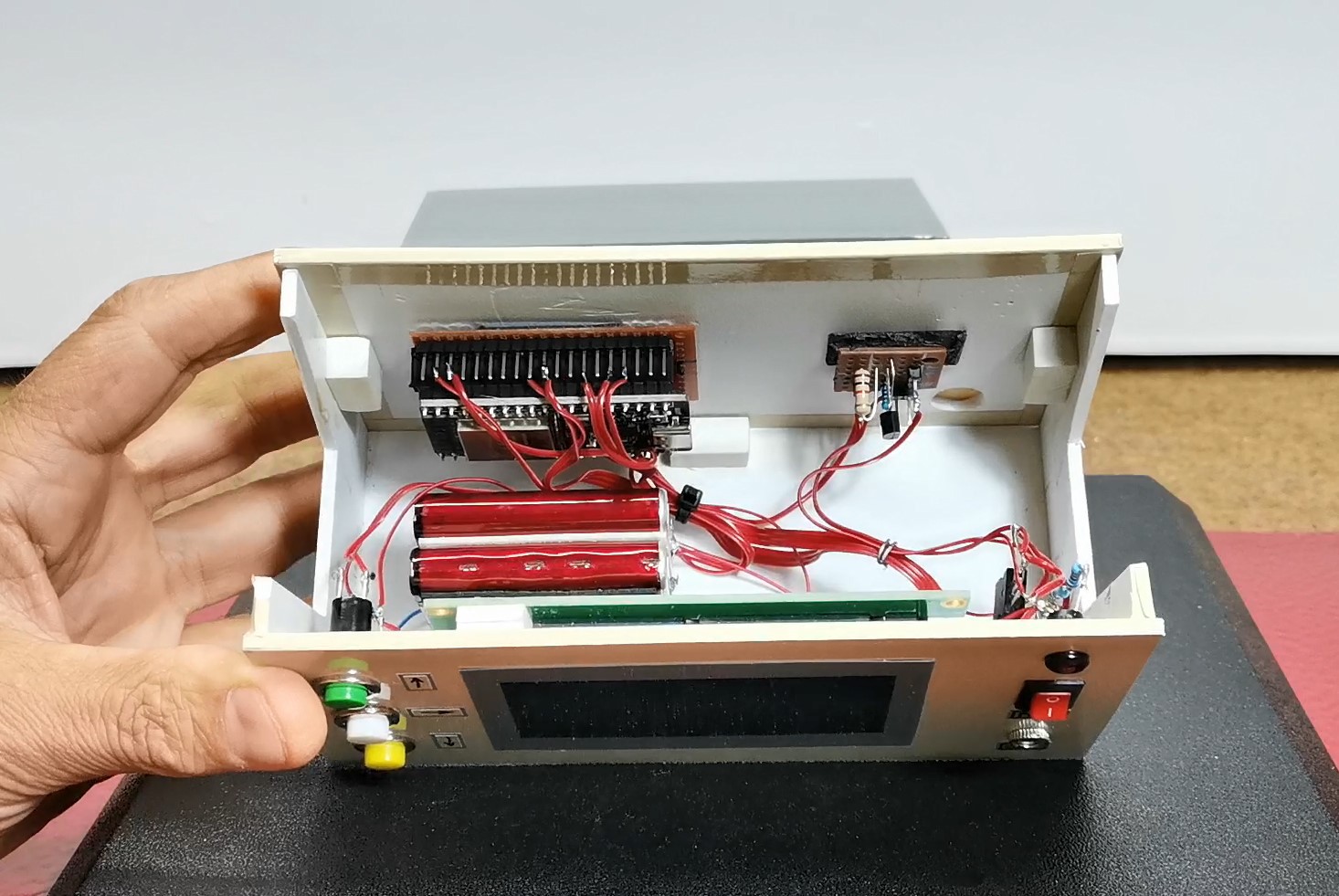
- ESP32 Developement Board
- ST7920 chip based LCD with 128x64 dots resolution
- General Purpose Transistor NPN (in my case 2N2222)
- 3 Buttons
- Resistor 10K and 470R
- 7805 voltage regulator
- and battery
First, let's describe in more detail how to upload the code to the microcontroller.
For this purpose we go to Arduino IDE - File - Preferences - where we add the ESP32 URL to "Board Manager URLs" as follows: (https://raw.githubusercontent.com/espressif/arduino-esp32/gh-pages/package_esp32_index.json
- Now click "Tool-->Board-->Board Manager", and search for "esp32" then click "Install"
- Next on Tools-> ESP32 arduino -> ESP32 dev module
- Follows installation of the U8g2lib library
- For this purpose, we go to sketch - include library - manage libraries - and search for U8G2lib -> install
- After that we paste the code to Arduino IDE , choose apropriate COM port, and press Upload.
By completing this procedure, the code is installed and the device is ready for operation. And now let's see how the device works in real conditions. The start menu appears when turned on.
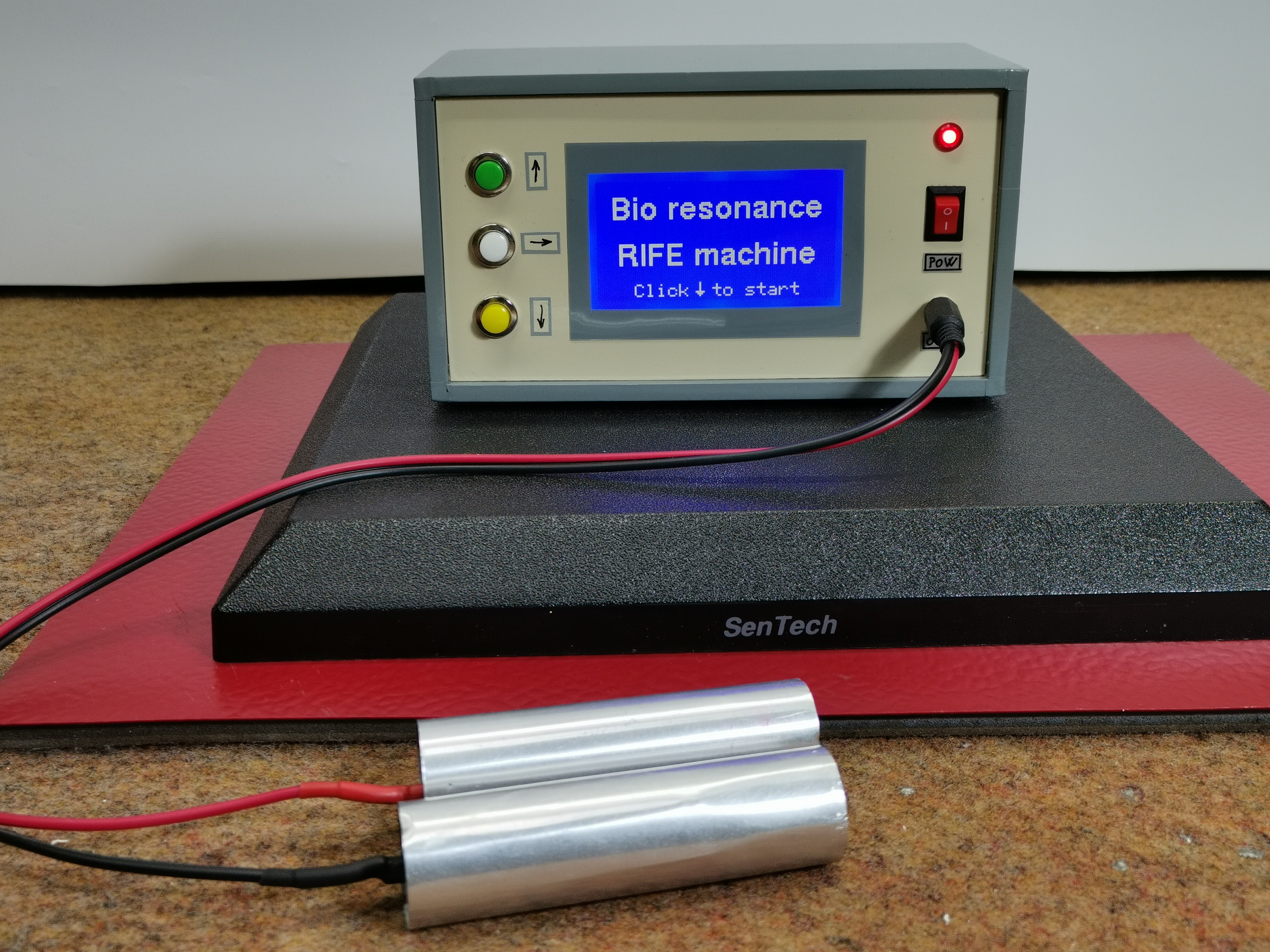
By pressing the down button we enter the submenu in which we select the disease for which we want to apply therapy. This time, I added a Zapper function to the code that generates a rectangular signal with a frequency of 30 KHz with a duration of 5 minutes, but the therapy can be extended if desired by pressing the middle (enter) button once.
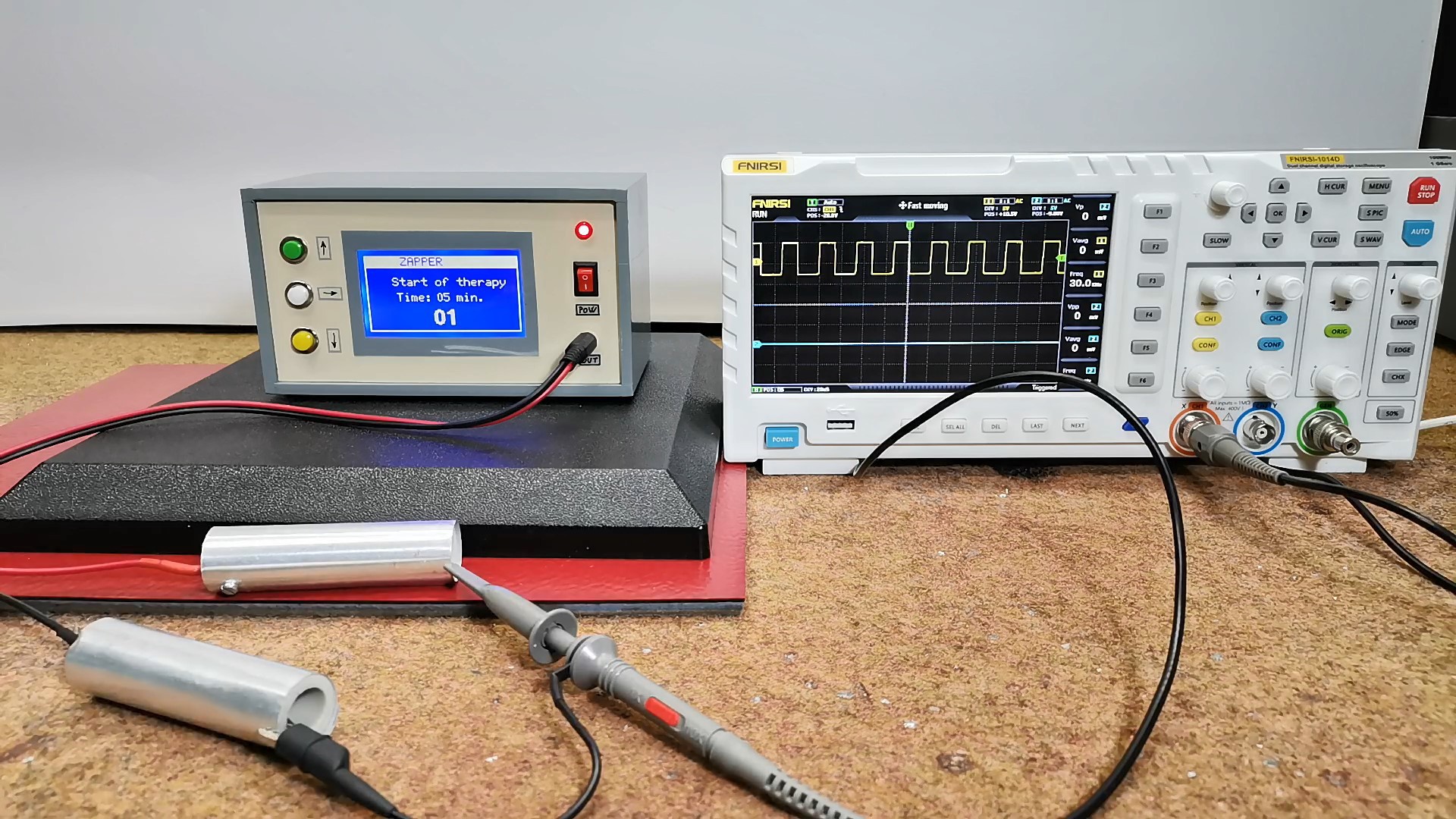
Specifically, the code includes frequencies for therapies for 31 diseases, but we can very easily change and enter frequency arrays for many other diseases. The set of frequencies for each disease can be downloaded for free online if you request a "rife frequency list".
Now that we have selected the therapy for a certain disease, we press the Start button and the duration of the whole therapy, and the elapsed time from its beginning, appears on the screen.
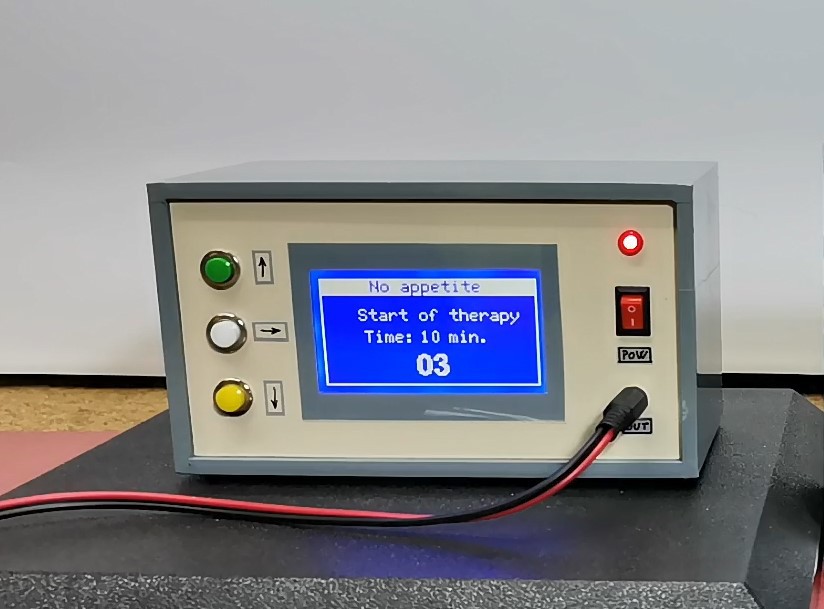
The signal from the generator can be applied to the "patient" through contact of the electrodes with the skin. The electrodes should be stainless and may be in the form of cylinders or plates. During therapy it would be good to immerse them in salt solution for better conductivity.
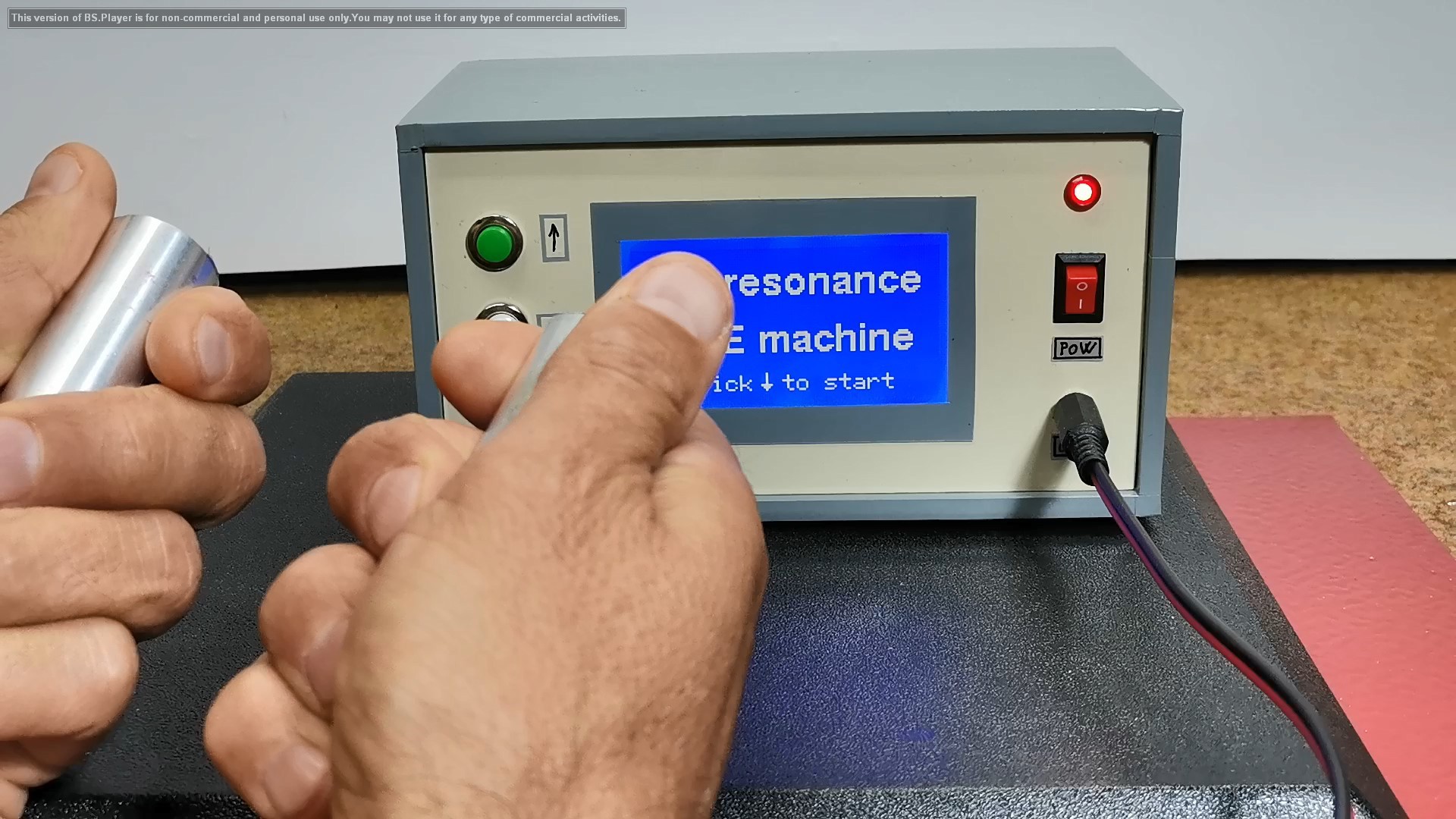
I am not a medical person and I can not discuss the effect of the device now, but as the output voltage does not exceed the 9V, the use of the device is completely safe for health. And of course, we need to treat bioresonance as supporting conventional therapy.
To confirm what was said before, I will now observe the shape of the generated signal on an Oscilloscope. First, the Zapper program which, as we see, generates a rectangular signal with a frequency of 30 MHz. Next, as an example, let's take Acute Pain, which consists of a series of 10 different frequencies lasting one minute each.

As We see on Scope, the signal has a different frequencies which change every minute of therapy. The elapsed time as well as the end of the therapy are also marked on the display, while to continue the same therapy we have to press Enter, and to select another therapy press on the bottom button.
And finally a short conclusion. I am not a medical expert and I cannot discuss the effect of the device, but only a simple and inexpensive way to make such a device yourself, because similar commercial devices are sold at astronomical prices. If you are considering using this device for health-related purposes, it is crucial to consult a qualified healthcare professional to ensure safety and efficacy. This video only explains the technical aspect of this device (how to build it). Тhe device is built into a suitable box made of PVC with a thickness of 3 ansd 5 mm and coated with self-adhesive colored wallpaper.
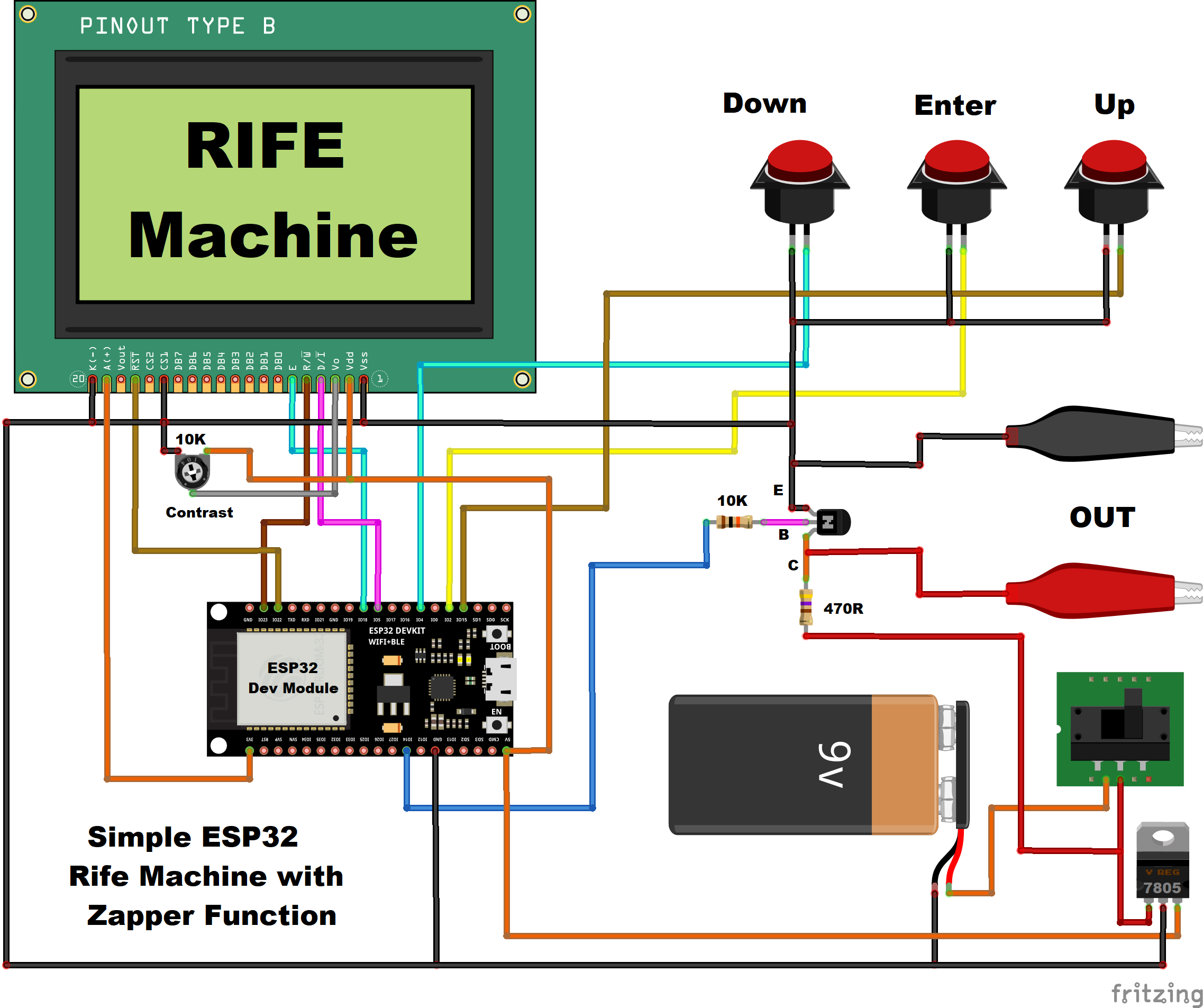
 mircemk
mircemk